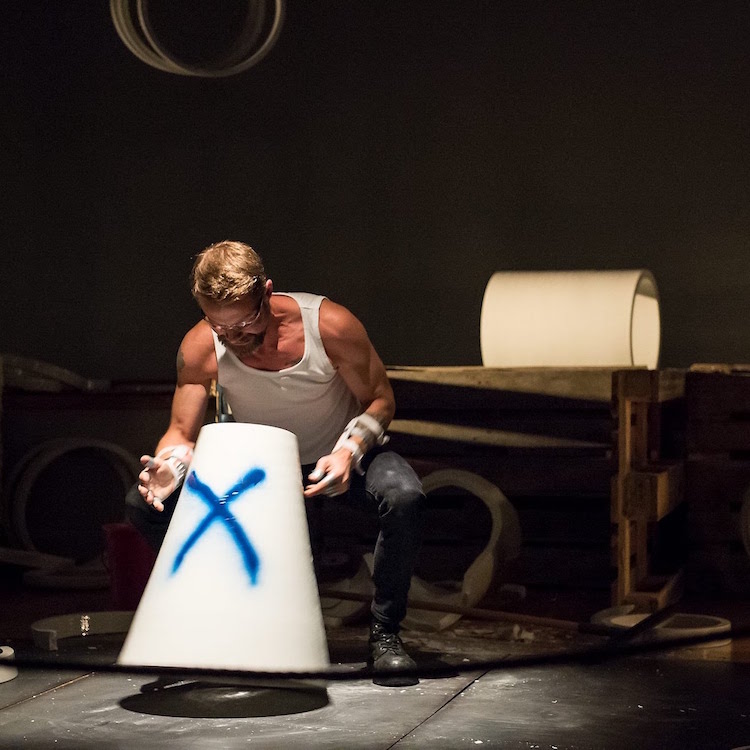Welcome back to our Video of the Week segment after a long .mov hiatus. This week we’re excited to show you two performance art videos from musician, composer and ceramist Jørgen Frederik Scheel Haarstad, followed by an essay by Jennifer Allen.
Haarstad transforms cast-off ceramics into installations, sound works and audio-visual performances with instruments with which he plays his original music. This video of Haarstad’s performance offers you a taste of his physical manifestations of sound
Through a lyrical engagement with the materials, composing through rhythm, repetition and pauses, I hope to transform music into physical manifestations. Rock music is vulgar Romanticism, according to Robert Pattison, and while my artistic method shares the spontaneity and excess of rock’n’roll, it necessarily needs to take into account the fragility of ceramics, and it is this somewhat improvised dialogue that materialises in my works. Through experimentation with the ceramic object, I seek to reach an abstraction that transcends one fixed set of meanings to open up in- stead a more immediate, physical interpretation.
We also found another video of one of Haarstad’s performances at The National Museum in Norway.
Other Services
By: Jennifer Allen
We tend to associate ceramics with the domestic realm: crockery, vases, figurines. Not Jørgen Frederik Scheel Haarstad. The artist looked to a ceramic form which is just as prevalent and beneficial as homeware in our daily lives, yet not as visible: the electrical insulator. Perched on high-voltage power lines far above our heads or hidden away in a dark fuse box, the insulator is a kind of abstract minimalist sculpture, yet valued for its resistance, water-tightness and strength.

In contrast to domestic ceramics, ceramic insulators know few rivals because the material outperforms others. Plus the slightly flawed “rejects” are unlikely to find a home – unless of course they were produced in Fredrikstad at the national porcelain factory Norsk Teknisk Porselen, where Haarstad collects both split and faulty insulators in monochrome white and black. He positions these large-scale sculptures in even larger installations, which may be dangerous – not for any electrical current, but for the fatal sharpness of the shards.
Again, in contrast to homeware, the insulators must be handled with even more care and caution when they are broken than when they are intact. Works such as Lethal Assumption (2014) – white shards, crowded tightly together, like the incisors in a tyrannosaur’s mouth – manage to combine shattered fragility with lethal menace.
Such installations might be viewed as industrial readymades, but Haarstad is also a professional musician and composer who decided to fashion his own musical instruments from porcelain: extra-large tiles, pipes or smaller pellet-like shapes. He plays these unique instruments in unconventional ways: hitting them with drumsticks or with other rough pieces of porcelain and even letting them crash to the floor.

The sound generated by a large ceramic tile can last up to 45 seconds and ranges from 9 Hz to 17,000 Hz (human hearing rests around 20 Hz). The artist-musician uses a mixer to transform these sounds into a composition which shifts eerily from music to silence for human ears. With his unusual ceramic sound works, Haarstad multiplies the uses of industrial materials while rejecting their traditional destinations. His oeuvre – artworks, musical instruments, compositions, performances – blurs the division between these domains. By making music that can escape human perception, he not only challenges the idea that music should be made for human beings, but also questions the anthropocentrism of all arts.
Do you love or loathe this video from the world of contemporary ceramics and contemporary ceramic art. Let us know in the comments.

Add your valued opinion to this post.